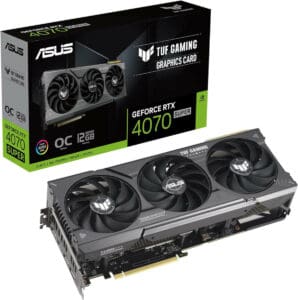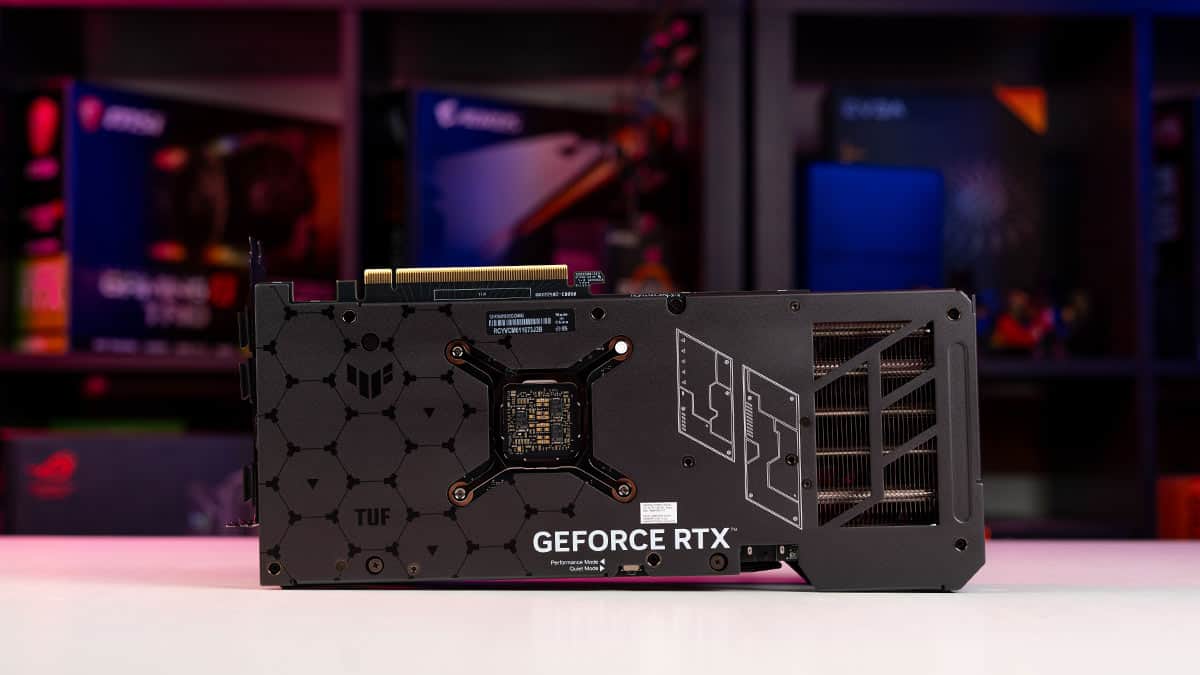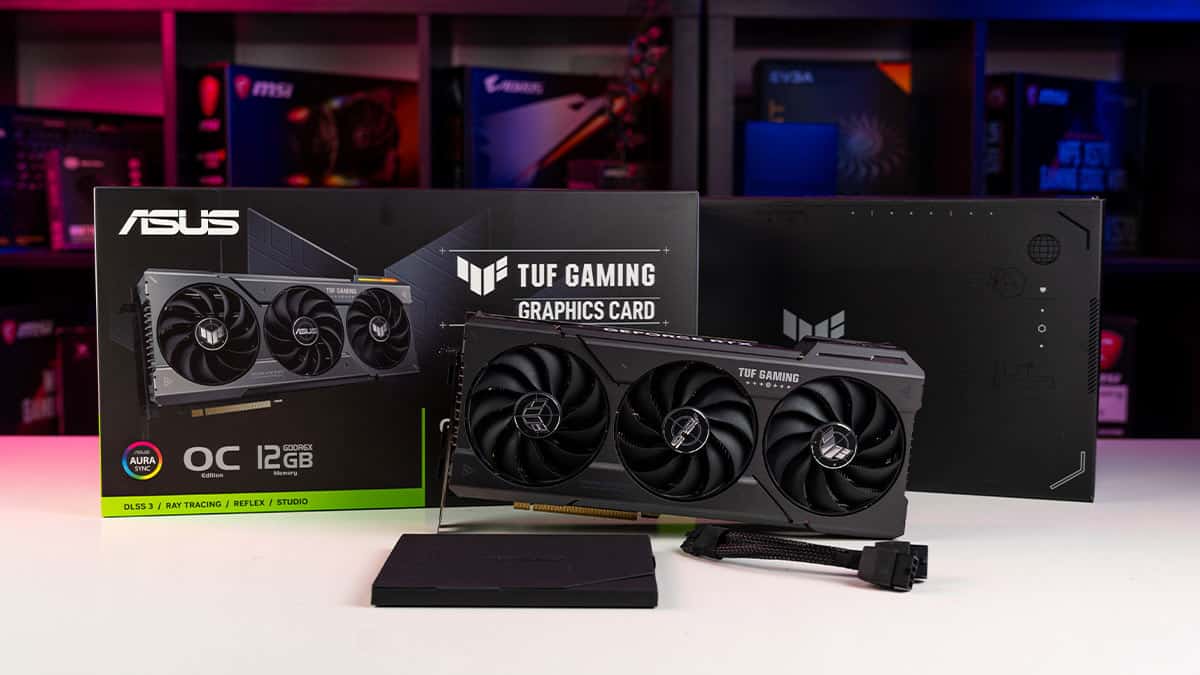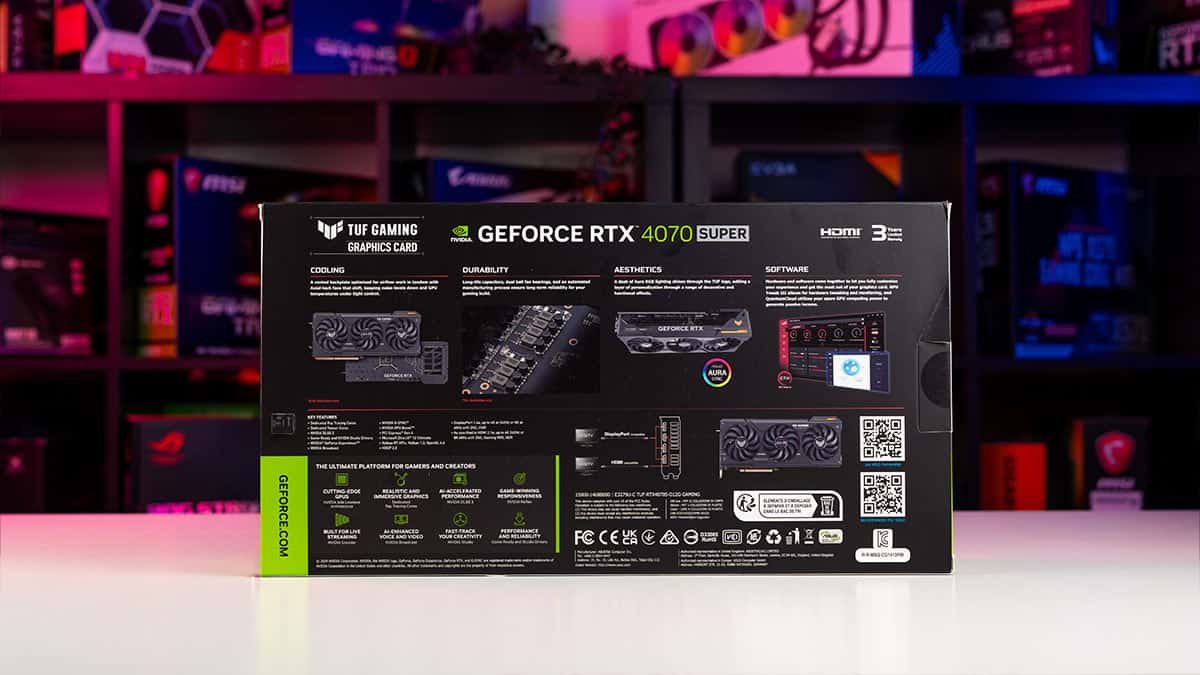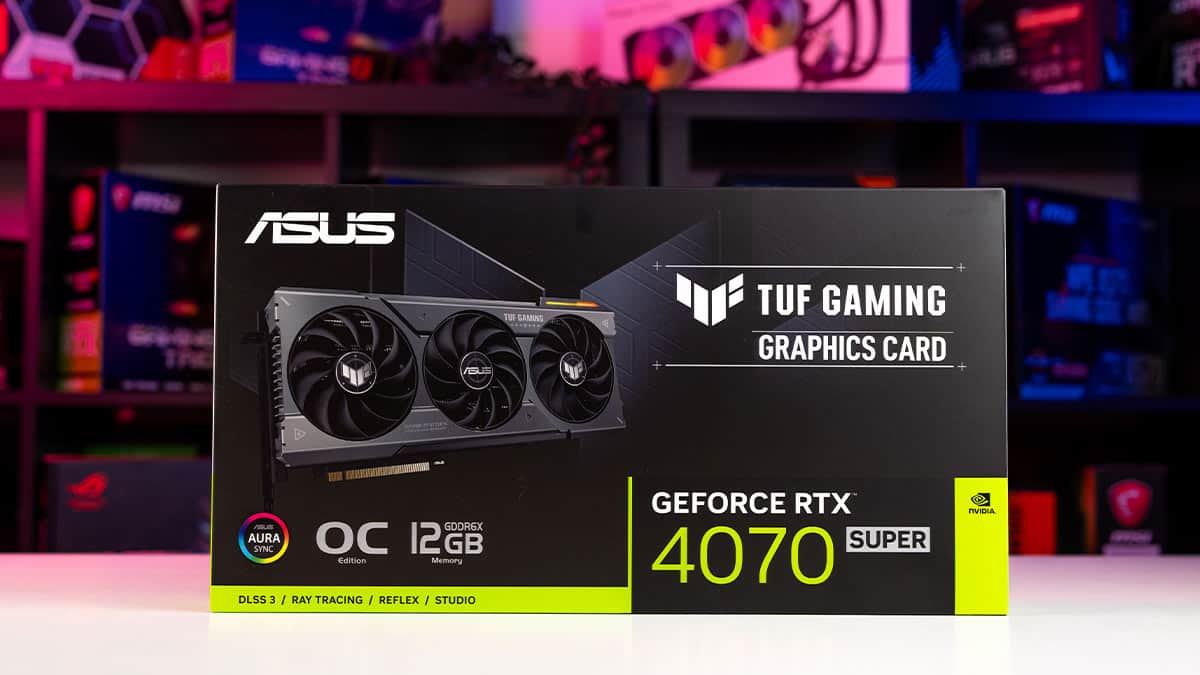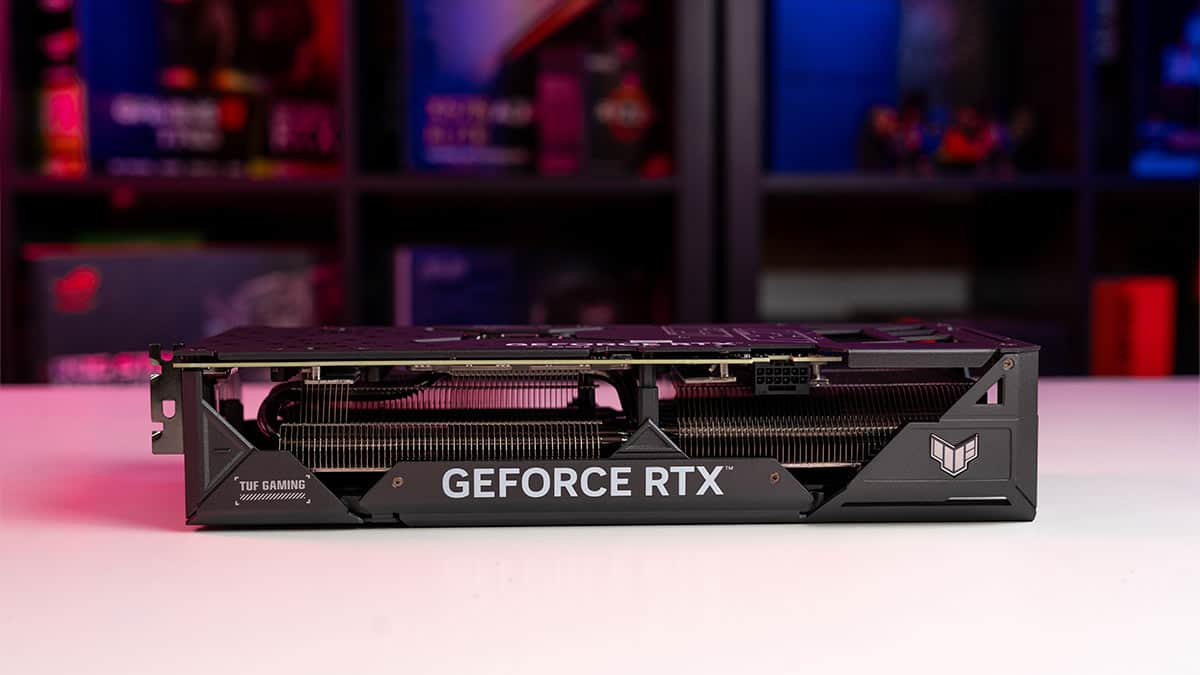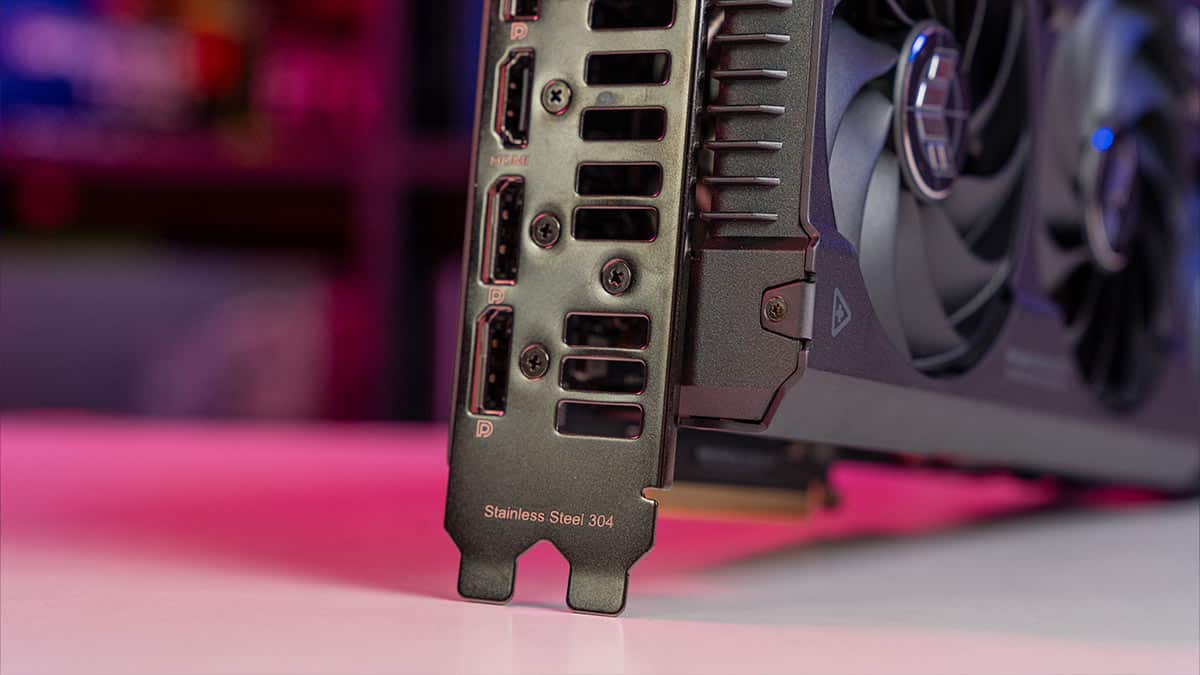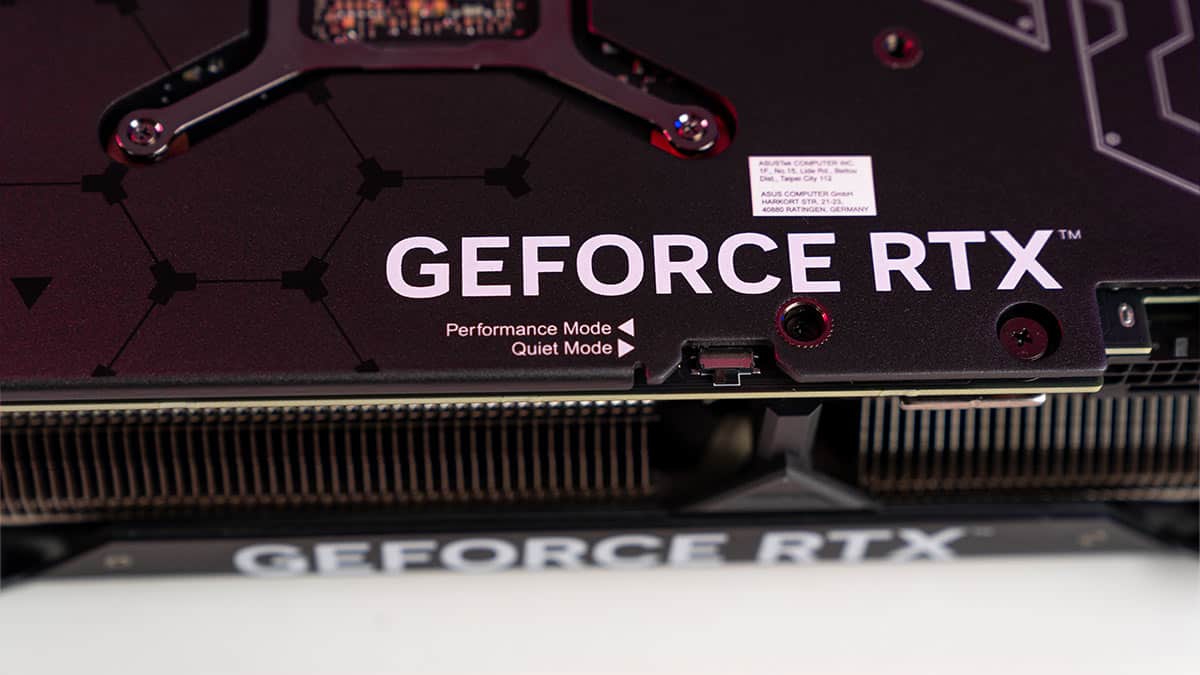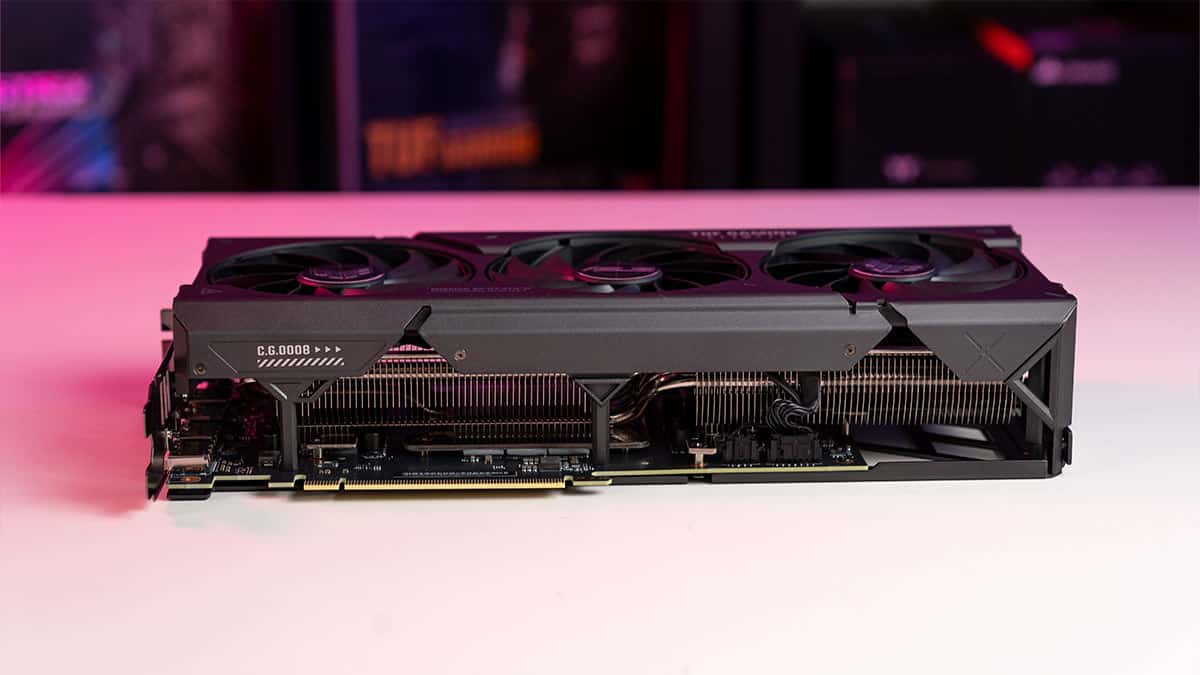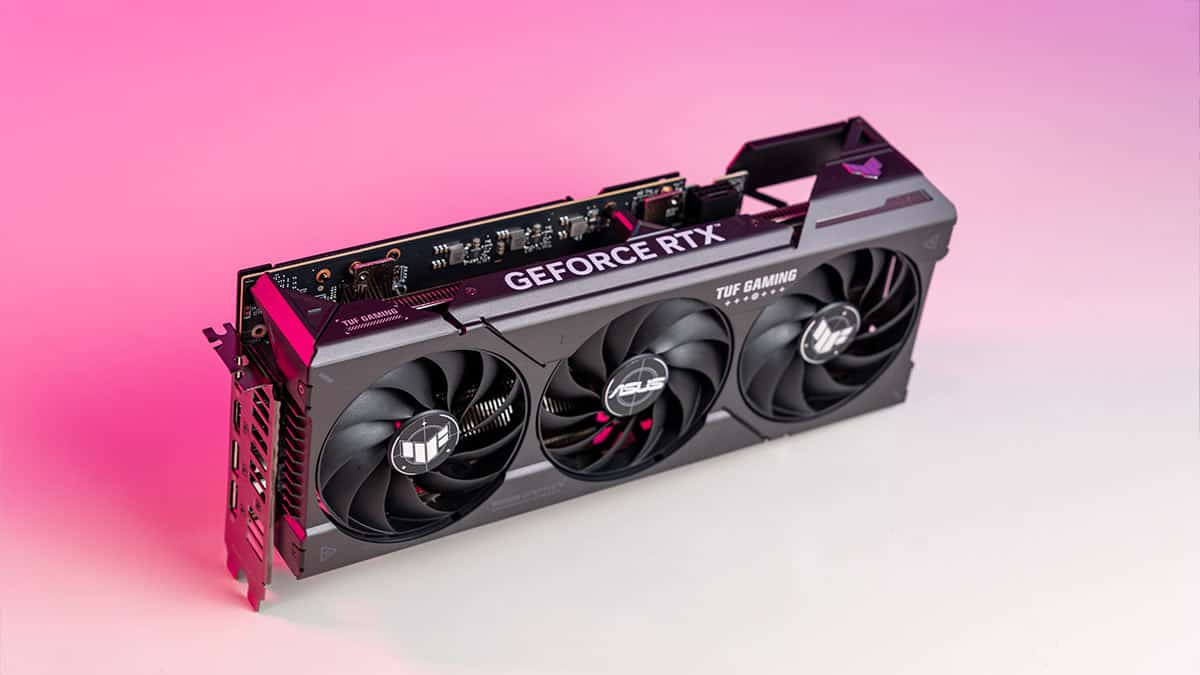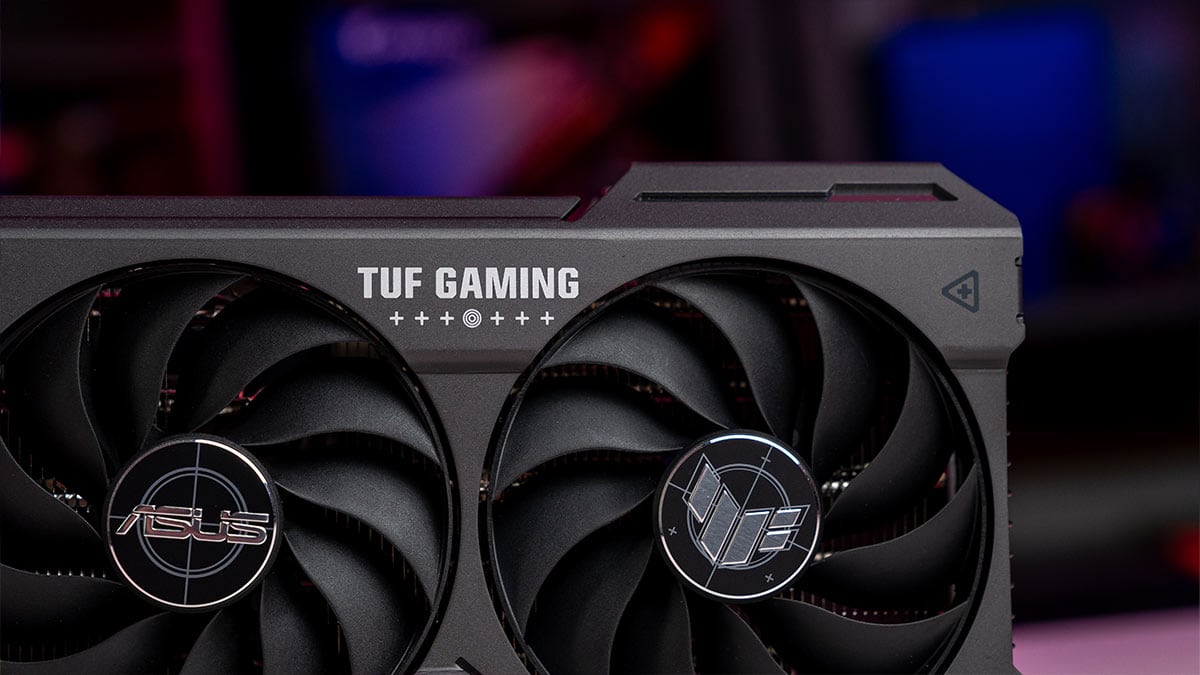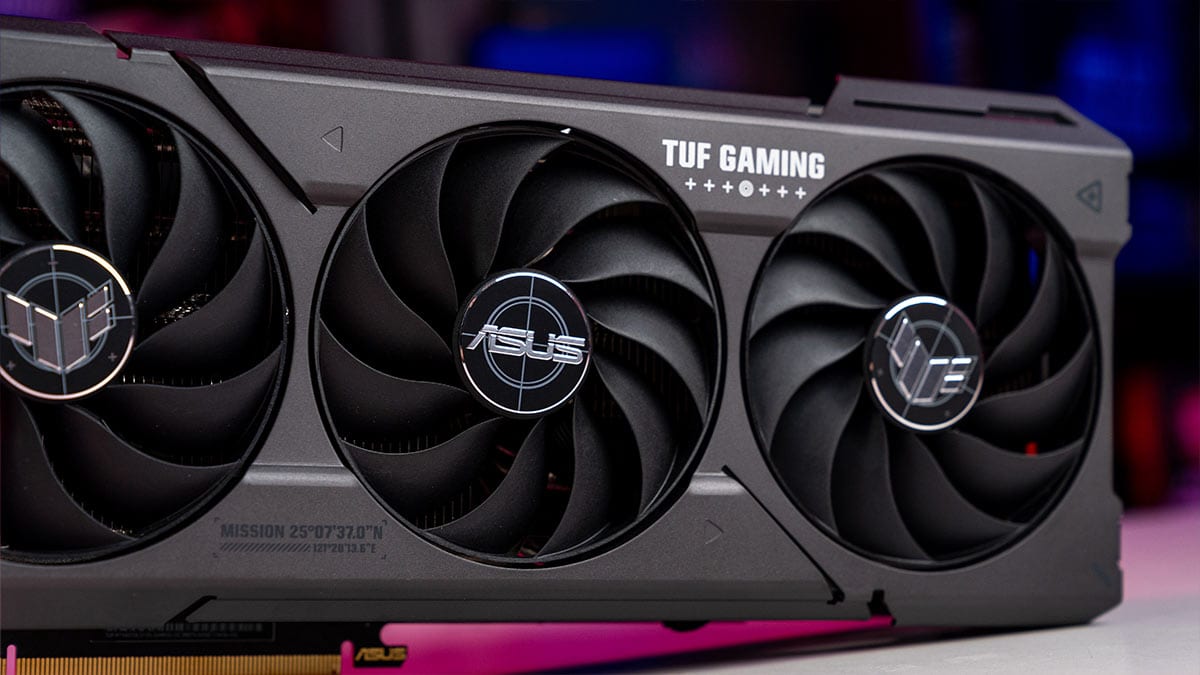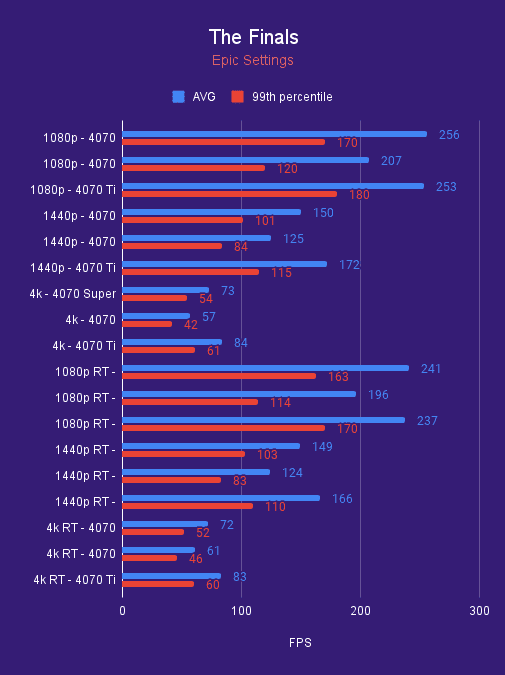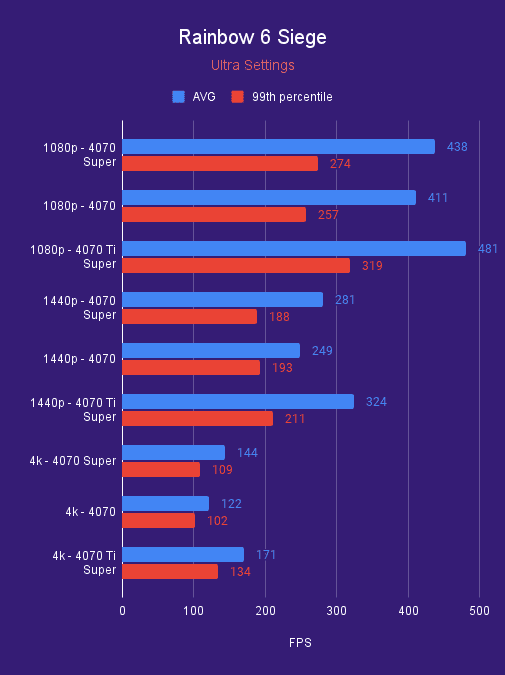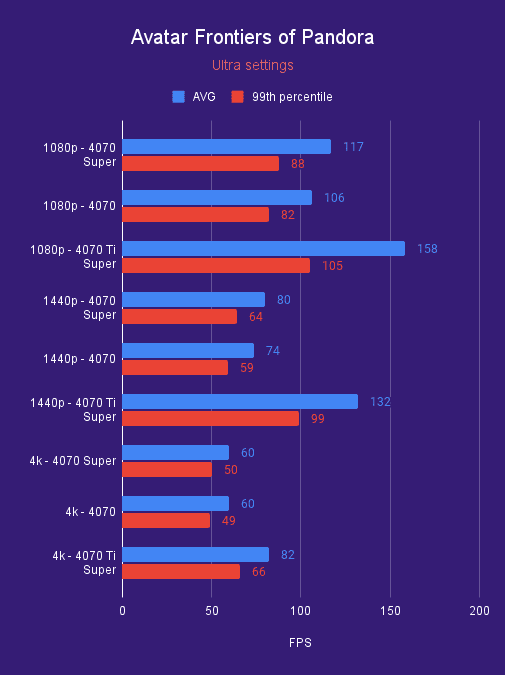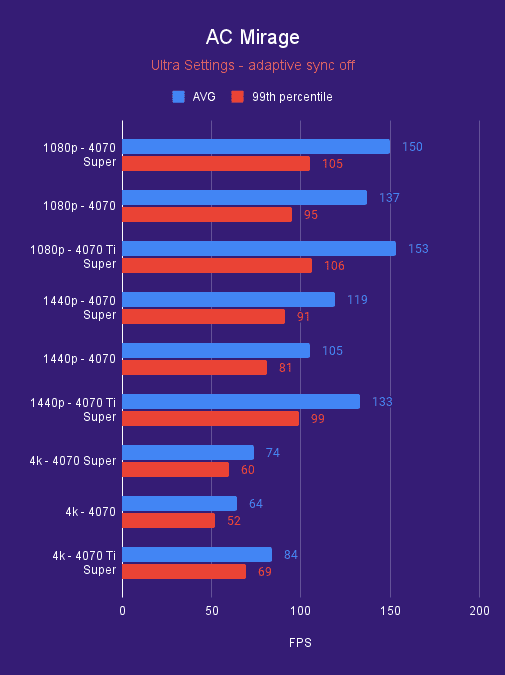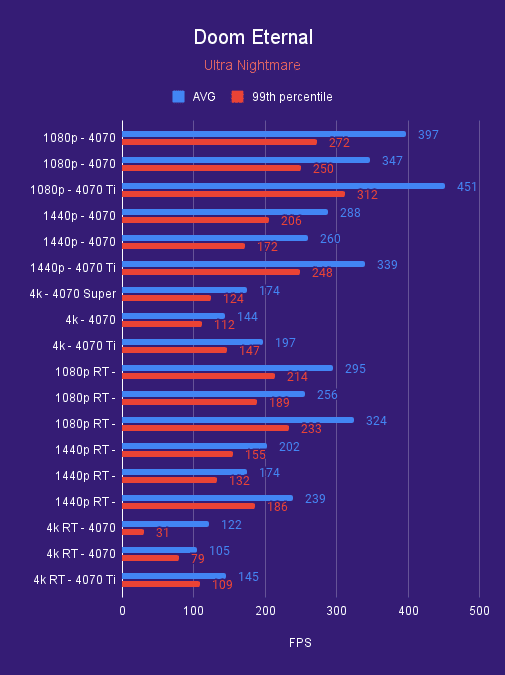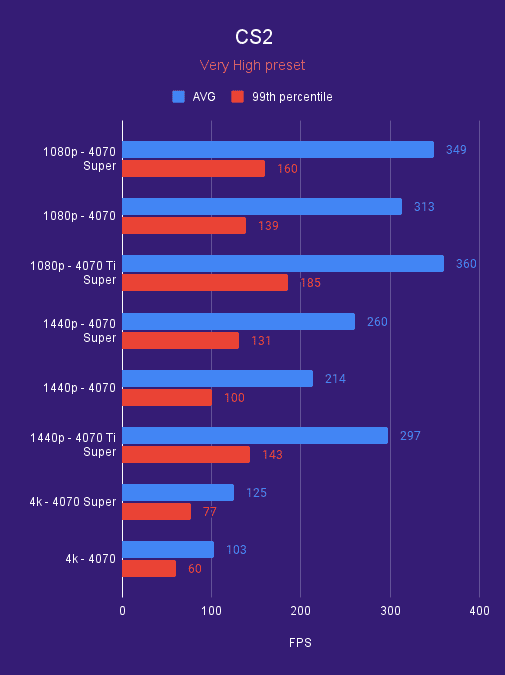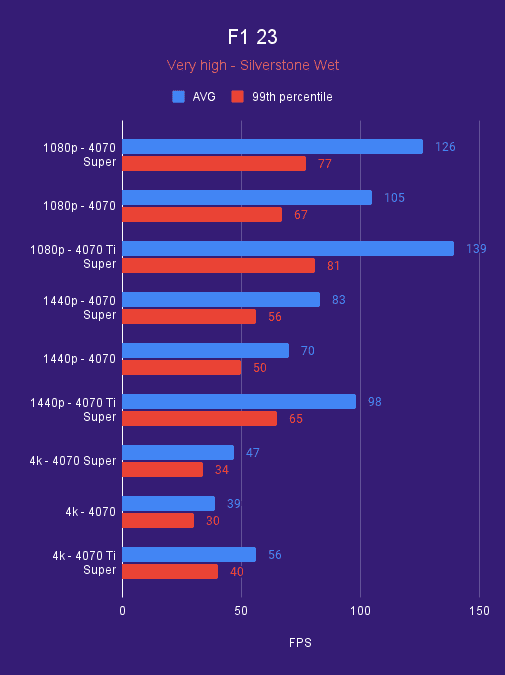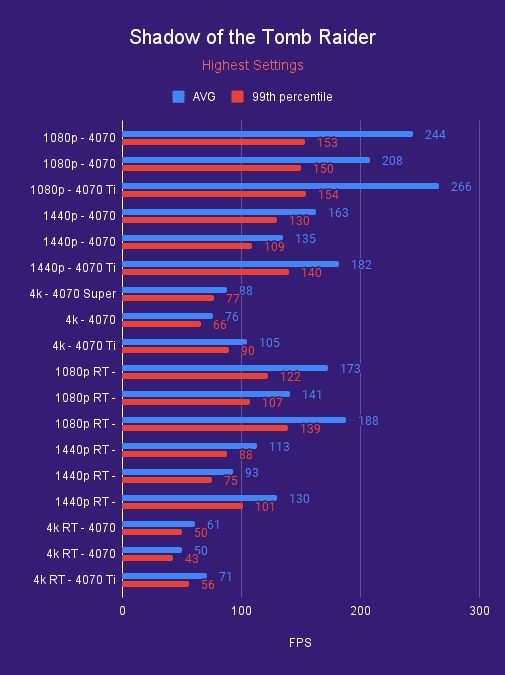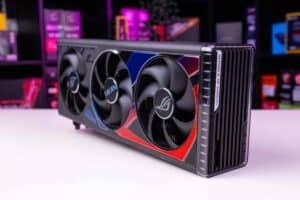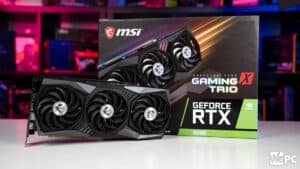ASUS TUF OC RTX 4070 Super review – is the 4070 Super worth it?
We put the lowest Super to the test and find out if the 4070 Super is worth it
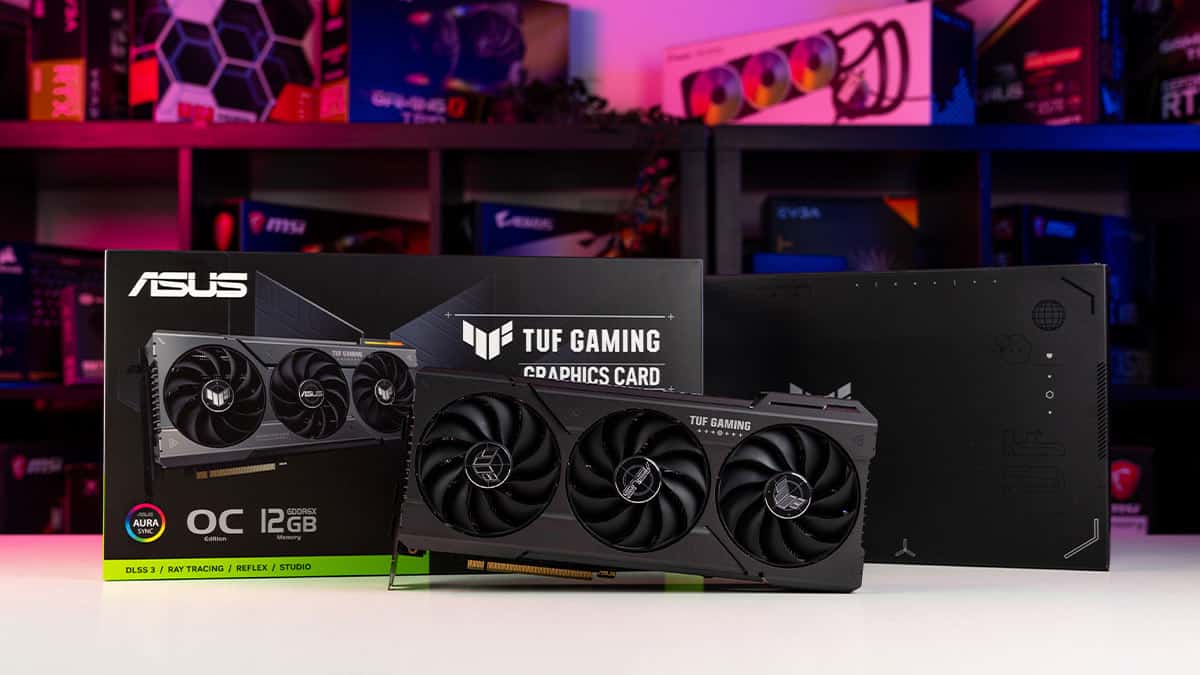
WePC is reader-supported. When you buy through links on our site, we may earn an affiliate commission. Prices subject to change. Learn more
Nvidia has gone Super on its 40 series graphics cards, the lowest point of that is the 70 model. So we review the RTX 4070 Super to find out how it compares against others, and if that Super upgrade is worth it. For our testing, we used the ASUS TUF RTX 4070 Super OC model.
These come towards the possible end of the Ada series, as these generations tend to have a two-year range. But the 50 series release rumors have been rather varied as to when it might come out, for now, the 40 Super series announcement at CES gives another range of options to choose from before this generation retires. Even though the recent release of the RTX 3050 6GB GPU shows nothing might be left behind in general anymore, as even AMD in processors is keeping AM4 alive with the 5700X3D release.
The 4070 Super was the first of the lot to release, coming as an upgrade vs the 4070, it does bring plenty of improvements but at a bit of a cost in power. Although it might be coming as the best GPU to go for on the lower end, it does put into question why it originally did not come as this option instead. Guess that’s just the Nvidia GPU tactic, but let’s see what this update brings anyway.

ASUS TUF Gaming GeForce RTX 4070 Super OC
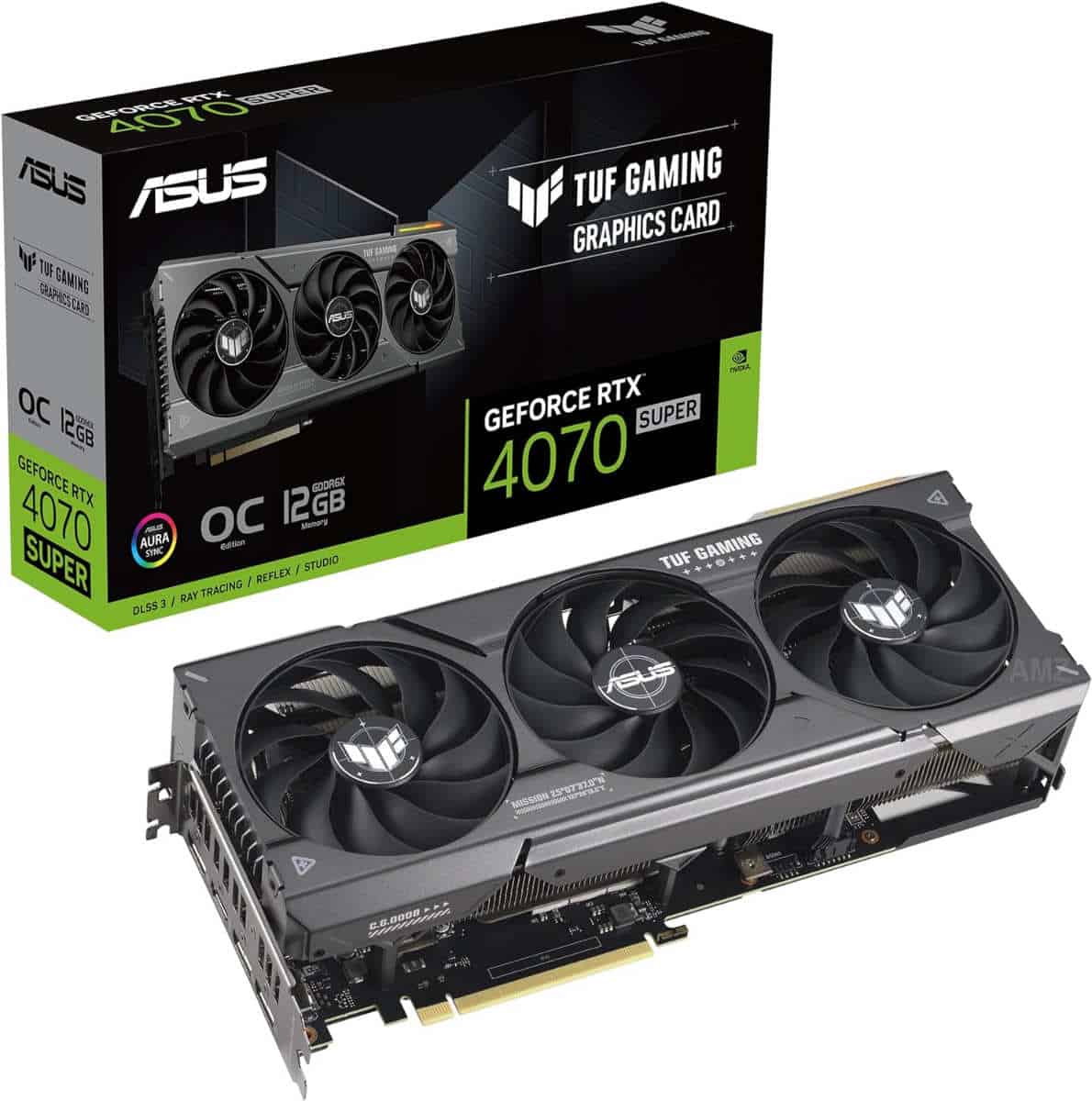
Core clock speed
2565 MHz boost, 1980 MHz base
CUDA count
7,168
Memory
12GB GDDR6X
Dimensions
301 x 139 x 63 mm
PSU required
750W
TBP
220W
Best GPU deals
- MSI Gaming GeForce RTX 4080 – Save 12% NOW!
- GIGABYTE GeForce RTX 3060 Gaming OC – Save $130 NOW!
- XFX Speedster MERC310 AMD Radeon RX 7900XTX Black Gaming Graphics Card – Save 8% NOW!
- ZOTAC Gaming GeForce RTX 4070 Ti Trinity OC – Save $100 NOW!
- MSI Gaming GeForce RTX 3090 – Save 37% NOW!
- XFX Speedster SWFT319 Radeon RX 6800 Core Gaming Graphics Card – Save 13% NOW!
- Sapphire Pulse AMD Radeon RX 7900 XTX – Save $360 now!
- Sapphire Nitro+ AMD Radeon RX 7900 XTX Vapor-X Gaming Graphics Card – Save $380 now!
- ASUS TUF Gaming GeForce RTX 4080 OC Edition Graphics Card – Save $175 NOW!
- MSI Gaming GeForce RTX 3060 Ti – Save $115 NOW
RTX 4070 Super pricing
The 40 series has had a mixed value to the price to performance, but you can expect the Super range to improve upon that at least. That is since they are not increasing the price over the original cards, so looking to buy the 4070 Super you can expect a better choice for your money. If you do manage to find any of the best 4070 Super models at the recommended price you can expect to be paying $599, keeping in line with the 70 pricing from the two generations.
Due to the upgrade and the 4070 Super specs improvements you can get a much stronger performance and ability over the standard card. Making the original kind of obsolete but there are still some custom AIBs that will charge more for their offering. Such as the ASUS TUF OC model is priced at $689.99 on Amazon and ASUS’ website. A 15% uplift that bridges the gap between this card and even the RTX 4070 Ti Super above it at $799. Compared to AMD’s offering, you could have an RX 7800 XT for $499, or an RX 7900 XT as even though that was released for $899, the AMD GPU pricing keeps dropping with the release of Team Green options, and the likes of a Powercolor 7900 XT can be found for $750 on Amazon.
ASUS TUF RTX 4070 Super OC specs and design
Core clock speed
2565 MHz boost, 1980 MHz base
CUDA count
7,168
Memory
12GB GDDR6X
Dimensions
301 x 139 x 63 mm
PSU required
750W
TBP
220W
Memory clock
21Gbps
Memory bus
192-bit
Card bus
PCIe 4.0 x16
Output
1x HDMI 2.1a, 3x DP 1.4a
Power connectors
1x 16-pin
- Great build quality and design
- Strong value for the performance with 1440p and above resolutions
- A high cost model as it is much higher than MSRP
- Requires 16pin power connector and so an adapter is needed that has been hazardous
- Large size card can be harder to fit all cases
An upgrade to the 4070, the 4070 Super still stays on the same AD104 processor but upgrading to the 350 variant from the 250. Coming close to the 4080, it comes with 7,168 CUDA cores instead, but the memory stays the same. Offering up 12GB of GDD6X with a 504GB/s bandwidth. Even still for the extra cores the total board power increases up to 220W. So the improvements do mean running a bit hotter and sucking back more electricity to do so.
As for the ASUS TUF OC, you can expect a boost in the engine clock from the custom card. Coming in overclocked, it does offer a boost over the factory FE card. The TUF OC has an OC mode of 2,595MHz with a default of 2,565MHz. The standard is rated with a 2,480MHz boost clock, meaning the ASUS overclock just gets you a 3.3-4.4% boost that might just boost the FPS by a small percentage.
The model itself also provides a great option for a custom card, offering a solid metal shell with a quality build and set of materials it does bring a heavy option for your build. But all of that is for a reason, the cooling is substantial for the power of the GPU. It comes with a 3.15 slot thickness to fit in the huge heatsink and six heat pipes moving all the heat away and keeping the card from overheating and losing out on performance.
For airflow performance, the card has three axial tech fans with the center one spinning the other direction. That provides a great streamlined current through the card, which is also free to leave via many pathways. As with the sides and partial back open up the heat can escape out and be carried away by your cooling setup.
ASUS TUF OC RTX 4070 Super performance
In general, the 4070 family is aimed towards 1440p performance, but it might be able to push even further. However, since the memory capacity stays the same with the Super, it still might be the limiting factor to getting a better performance at higher resolutions. So we compare the 4070 Super against the 4070 Ti Super and 4070 to find how it varies.
Our test setup:
- Ryzen 9 7950X CPU
- ROG X670E Hero motherboard
- Phanteks 1000W PSU
- Corsair Dominator Titanium 64GB 6600
- ROG Ryujin II 360 AIO CPU cooler
Gaming benchmarks
At the pure performance level, we can see the level of improvements the Super brings with it but also the level it doesn’t quite reach of the Ti Super. Starting off with CS2, the Esports game runs with plenty of FPS and achieves an 11.5% advantage at 1080p over the 4070 but then is just 3% behind the Ti Super. At 1440p that improves to a 21.5% lead but also a wider deficit of 12%, and at 4k it is a 21% and -17% difference respectively.
In Avatar Frontiers of Pandora, we see that performance differences are rather similar, as the 4070 Super leads by 10% over the 4070 and is 25% behind the 4070 Ti at 1080p. At 1440p that is at 8% lead and 39% behind respectively, whilst at 4K it’s on par with the original (which may have been a fault in the 4070 benchmark we no longer have) and 26% behind the 4070 Ti Super. For AC Mirage we see a similar situation as the numbers bunch up, with the 4070 Super 90% ahead of the 4070 and only 2% behind the Ti Super at 1080p. 1440p changes that to 13% ahead and 10% behind respectively, and 4K expands it even more to plus 15% and minus 11%.
Rainbow Six Siege provides another strong performance across the board, but the differences Expand. At 1080p the Super leads the 4070 by 6% and is behind the Ti Super by 9%, 1440p that changes to 12% and 13% respectively, and at 4K by 18%, and 15%. F1 23 is the last for basic rasterization, there the 4070 Super takes on the others with a 20% lead over the 4070 and a 9% deficit over the Ti. At 1440p that changes to an 18% lead and falls 15% behind, and at 4K that is 20% and -16%.
Ray tracing benchmarks
With ray racing games, we see the differences too, although Nvidia’s power at raytracing does keep the performance similar. Starting off with Cyberpunk 2077, our ray tracing results for the 4070 were on an older version so we skipped it out this time. But Doom Eternal brings a good comparison, as the 4070 Super at 1080p ray traced, it leads the 4070 by 15% and falls behind the 4070 Ti Super by 9%, at 1440p that increases to 16% and -15%, and 4K sits at 16% and – 15%.
The Finals is one game that provides a lighter implementation of the feature as it is more fast-paced and has high FPS in general. There the 4070 Super leads at 1080p over both (a likely test error rate for the Ti Super) the 70 and 70 Ti Super by 23% and 1%. At 1440p that falls back down to a 20% lead over the 70 but falls behind the Ti Super by 10% and 4K which changes to 18% and -13% respectively. Shadow of the Tomb Raider shows similar differences as the 70 Super leads the 70 by 22% and is behind the Ti Super by 8% at 1080p, at 1440p that is 21% and -13%, and at 4K that becomes 22% and -14% respectively.
For more work-orientated benchmarks, you can check PCGuide on their 4070 Super review.
Is the 4070 Super worth it?
Overall, it’s hard to argue with a roughly 20% uplift that the RTX 4070 Super provides over the original card. It makes it a lot more worth it for certain, but it does make us think that’s what the card should have been initially. It is a strong card for 1440p performance and brings the latest features that Ada has to offer to a much lower price tag, but that still is a lot for a graphics card.
There are some better value options to go for when looking for a custom model though. As the ASUS TUF does provide a great experience it’s hardly worth the massive price hike. At that point, the AMD 7800 XT comes into view as a much better option to go for but in general, it might be as well if you can find it for an even lower price than MSRP.

ASUS TUF Gaming GeForce RTX 4070 Super OC
